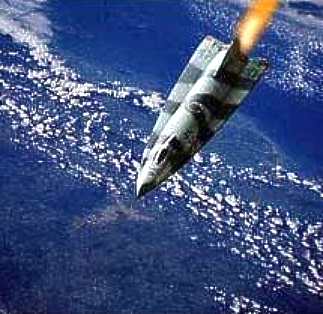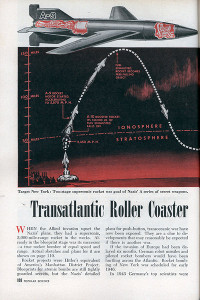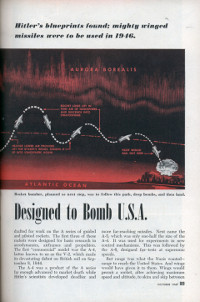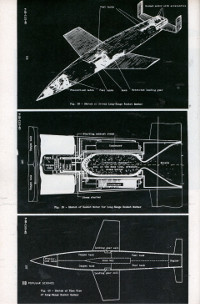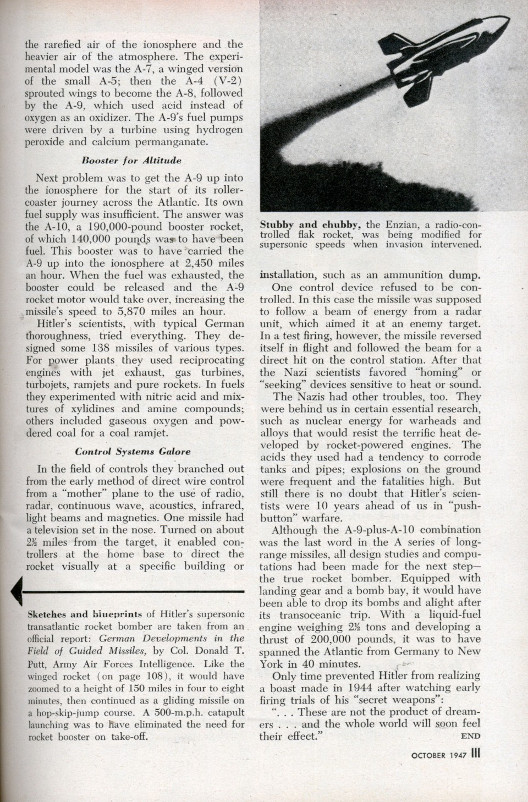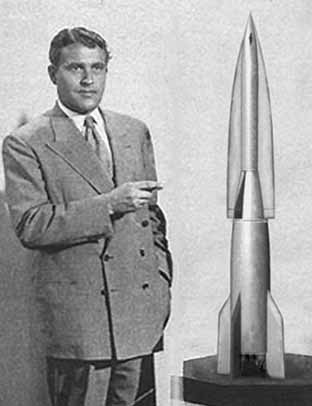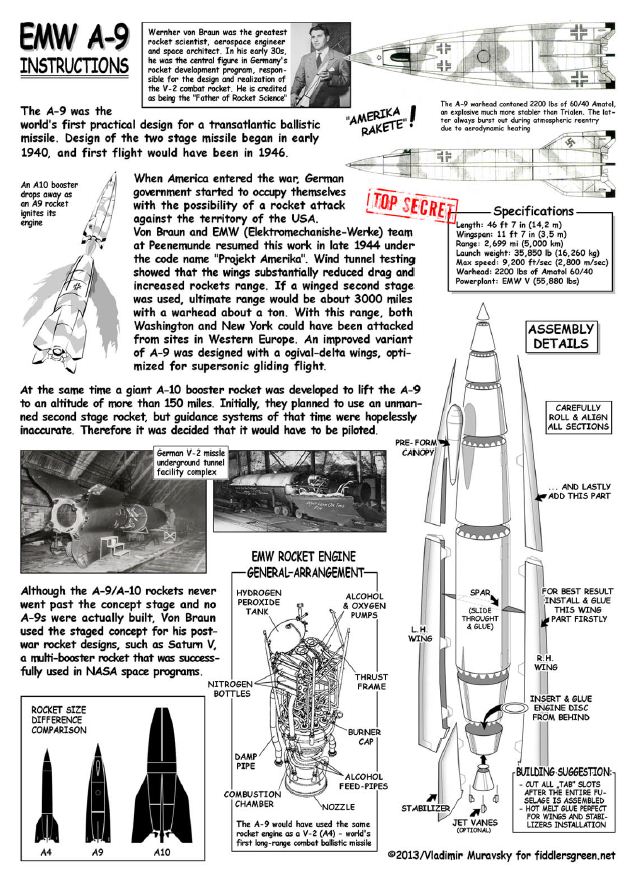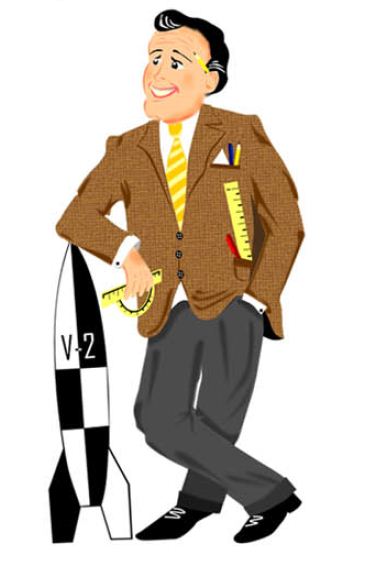



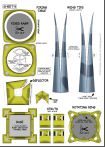
The Nazi A9 Rocket 
Transatlantic Roller Coaster Designed to Bomb U.S.APopular Science - October 1947
Instructions to build the A-9 rocket paper model
How it Works
|
What People Say...
Thanks for this great model. I love Vlad's work and he keeps getting better! Nice cartoon there, Scott.
It's scary that it goes from Germany to New York City. Couldn't it go from Germany to Iraq or Afghanistan instead? - Mike C.



